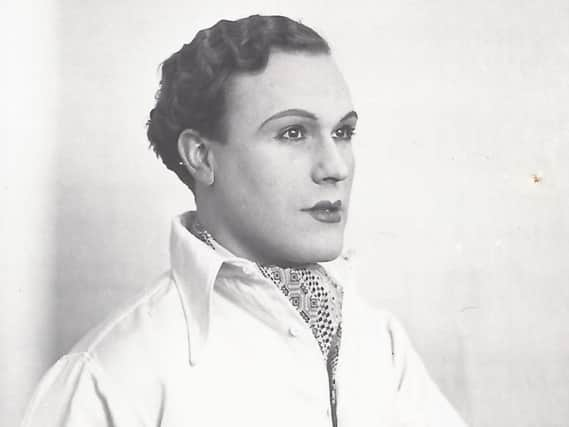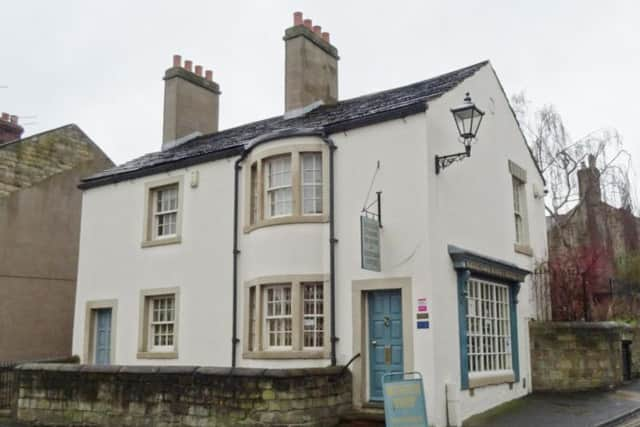Barnsley colourful character who inspired a museum in his name


The Bard of Barnsley volunteers at the Maurice Dobson Museum in his home town.
Here, one of his fellow volunteers, local history writer Jane Ainsworth, talks about the museum and about Maurice and his lifelong partner, Fred Halliday.


Advertisement
Hide AdAdvertisement
Hide Ad“ My husband Paul and I retired to Barnsley three years ago after spending all of our working lives in Cambridge, with its own (and easy access to London’s) heritage and culture.
We were very impressed early on at the number of museums, art galleries and stately homes there are in this area, where my roots are.
Barnsley is very fortunate that, in addition to various council-owned places of interest, it is has two excellent independent museums within the district.
Both exist because of the generosity of their very different donors plus the commitment of volunteers who manage them and open them for visitors to enjoy for a small entry fee.


Advertisement
Hide AdAdvertisement
Hide AdWhereas Cawthorne Victoria Jubilee Museum was the idea of the local vicar, who enlisted the support of Sir Walter Spencer Stanhope of Cannon Hall and his artist brother Roddam to create it, the Maurice Dobson Museum was the gift of a local eccentric shopkeeper to the people of Darfield.
Geoffrey Hutchinson, Chairman of Darfield Amenity Society, has been involved with the Maurice Dobson Museum from its inception.
He helped to set up DAAS in 1973 and was one of the instigators of the museum project leading to the opening in December 2000.
I responded to a notice seeking more volunteers at the Darfield museum and I have really enjoyed helping out once a month for the last year.
Advertisement
Hide AdAdvertisement
Hide AdPeople of all ages are encouraged to participate in any way they can.
For example IT support, practical assistance and fresh ideas are contributed by 15-year-old William, following in the steps of his older brother Matthew, who was involved from the age of 14 until he went to university.
Other volunteers are retired from a wide range of occupations.
Visitors come from far and wide and they are usually pleasantly surprised at how much there is to see, as well as by the wealth of information provided by their personal guide.
Advertisement
Hide AdAdvertisement
Hide AdEveryone involved would like more people to be aware of what the museum has to offer to individuals, families and groups, for whom special opening arrangements can be made.
They can be sure of a very friendly welcome.
Maurice Dobson was born on June 7, 1912 at 96 Station Lane in Wombwell to miner William Dobson and Annie Nettleton, who had married in 1887.
The family occupied four rooms at 96 Station Lane and had a smallholding of three acres to keep themselves well fed.
Maurice was the youngest of 11 children and attended Darfield Council School before starting work at Mitchell Main Colliery at a young age.
Advertisement
Hide AdAdvertisement
Hide AdAn anonymous school friend described how Maurice assisted with housework when his sisters married and left home.
He was a good neighbour and spent hours after work playing cards or other games with those who were ill, he learnt how to crochet and became an expert ballroom dancer.
Maurice was renowned as a good boxer and, according to his passport, he was 5ft 5in tall with brown hair and eyes.
Maurice joined the army in August 1929, serving with the Gordon Highlanders before transferring to the York and Lancaster Regiment in October 1929 for the rest of his seven-year contract.
Advertisement
Hide AdAdvertisement
Hide AdDuring the Second World War, Maurice enlisted in July 1940 with the Durham Light Infantry, serving in the Middle East and North Africa.
After being discharged on medical grounds in February 1944, he worked in the hotel industry.
Maurice met his long-term partner, Fred Halliday while in the army. They lived together openly despite the fact that homosexuality was not made legal until 1967.
Fred was born on September 2, 1914 in Pudsey and his passport describes him as being 5ft 4in tall with hazel eyes and brown hair.
Advertisement
Hide AdAdvertisement
Hide AdAccording to Fred’s National Registration Identification Card, their addresses were 21 School Street, Darfield until 1948 then ‘Rosary’ Esplanade, Sandgate, Folkestone, for two years before relocating to the Victoria Hotel in Filey in 1950, then returning to School Street in 1951.
Most of Maurice’s married siblings had continued to live and work in Wombwell or Darfield.
Maurice subsequently bought 2 Vicar Road in Darfield as his home and business.
He ran a traditional corner shop with Fred, who died in 1988.
Advertisement
Hide AdAdvertisement
Hide AdWhen Maurice died on July 25, 1990, aged 78, he left an estate ‘not exceeding £115,000’ to Barnsley Council.
His will stipulated that a charity should be set up with members of the Darfield Amenities Committee as joint trustees to manage his home and ‘antique collection as a museum for the benefit of Barnsley’s inhabitants.
The Darfield Museum displays much of Maurice’s collection of antiques, art and various personal items, along with more recent donations that illustrate the history of Darfield.
The displays are changed periodically by Geoffrey, according to different themes, the current one being Darfield Brickworks.
Advertisement
Hide AdAdvertisement
Hide AdA cafe extension serves simple refreshments with Elsie’s home-made cakes and is very popular with visitors or as a meeting place for local groups.
Changing exhibitions by local artists are on the walls in the cafe.
On my latest visit, I asked Geoffrey to choose his favourite three items in the collection.
Not an easy choice since he is familiar with the huge number of objects on display and in storage (not only at the museum but with more valuable items at Cannon Hall).
These were his choices.
Advertisement
Hide AdAdvertisement
Hide Ad1. The crucifixion scene in a bottle made by an Italian prisoner of war in 1945.
A man with nothing, who created the object from scraps, then gave it to a girl for her birthday.
2. The remains of the rag and chain pump from the 1500s found at Houghton Main Colliery when being opencast mined.
This would have been destroyed but for the determined efforts of one man who rescued them from the teeth of the bulldozers.
Advertisement
Hide AdAdvertisement
Hide Ad3. Maurice’s 30-hour long case clock on show in Cannon Hall or the clock in the museum dating from around 1720, an eight-day sort which the Victorians recarved.
n The Dearne Valley Landscape Partnership have recently carried out a reminiscence project about the colourful life and character of Maurice Dobson with the Darfield Amenity Society and many local people, filming many interviews.
They have edited about seven hours of footage to create a fascinating 10-minute film, which has been added to their website plus YouTube.
The entertainingly diverse recollections have also been included in a special play by Qdos Creates about Maurice.
Advertisement
Hide AdAdvertisement
Hide AdThis has been written jointly by Stephen Miller, Landscape Partnership community officer, and Simon Carr, experienced actor and director, who will be bringing Maurice to life in performances of the play (details to be arranged).
The museum (pictured left) is at 2 Vicar Road, Darfield,
Opening times until Easter are Saturday, 10am-2pm and Wednesday, 1pm-4pm.
After that, they extend to Saturday, 10am-4pm, Sunday, 2pm-5pm and Wednesday, 1pm-4pm.